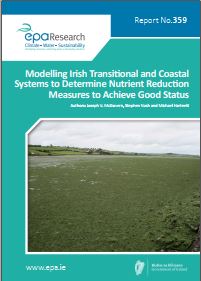Research 359: Modelling Irish Transitional and Coastal Systems to Determine Nutrient Reduction Measures to Achieve Good Status
Authors: Joseph V. McGovern, Stephen Nash and Michael Hartnett
Summary: In this project three Irish estuaries were modelled with the aim of quantifying the impact on water quality of existing nutrient loading from direct and diffuse inputs. Recommendations on the necessary nutrient load reductions to improve estuarine water quality and the appropriate pressure to target in nutrient load reductions for the three systems studied are provided.

Water quality :: Environmental Protection Agency, Ireland
https://www.epa.ie/media/epa-2020/publications/research/Thumbnail_359.jpg